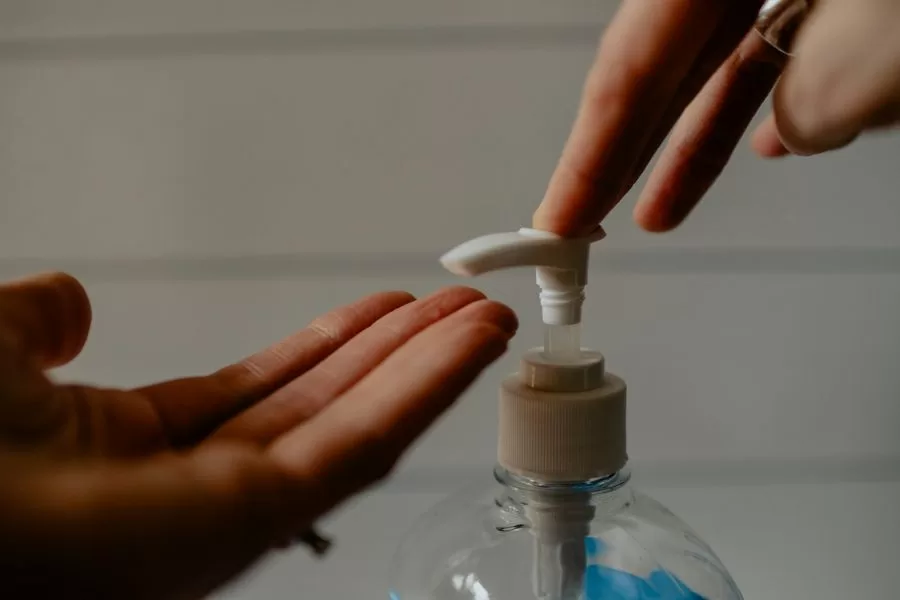Health
Mysophobia Demystified: Signs, Symptoms, and Solutions for a Fear of Germs

Approximately 9.1% of Americans have a specific phobia, which is more than 19 million people around the country. This number also includes people who may have more than one type of specific phobia.
In this article, we’ll be exploring the specific phobia known as mysophobia. Although there are no statistics for the exact number of people living with mysophobia in the United States, it is a well-documented specific phobia.
Mysophobia is a diagnosable and treatable phobia, that can be debilitating if left untreated. The condition can get worse over time, leading to a decline in quality of life, with the individual finding themselves suffering from abnormal thoughts, irrational behavior, and potentially—symptoms similar to obsessive-compulsive disorder (OCD).
An understanding of mysophobia isn’t only important for mental health professionals, but also for other healthcare providers like students studying accelerated nursing programs online, who might have patients who suffer from the condition and as a result struggle with environments like hospitals.
What is mysophobia?
Mysophobia is a type of specific phobia, which refers to the fear of germs and bacteria. In the past, this condition has been known as germophobia, bacillophobia, verminophobia, and bacteriophobia.
Phobias are a type of pathological fear, that falls under anxiety disorders. An individual living with mysophobia would have an irrational, persistent, and excessive fear of germs and contamination to the point it worsens their quality of life.
A person with mysophobia would constantly worry about germs, getting infected, and bacteria. They would go to unreasonable levels to avoid:
- Contact with other people’s body fluids.
- Dirt, dust, mold, and any other substances they associate with germs.
- Contaminated food.
- Items and surfaces they don’t know are clean.
- Any areas they irrationally believe may be contaminated.
It’s also common for people living with mysophobia to develop other, related phobias. This includes ataxophobia (fear of untidiness), nosophobia (fear of disease), and thanatophobia (fear of death).

What causes mysophobia?
Mysophobia, along with other types of specific phobias, can be caused by a variety of factors, including genetics and environment. Research has shown that learned behavior and media influence can also play a role in developing a phobia.
- Genetics: A family history of anxiety disorders increases the risk of developing a phobia. While a family history doesn’t always mean an individual will develop a phobia, it does increase the likelihood.
- Environment: The environment an individual grows up in and is around can cause mysophobia. For instance, any emotional trauma related to germs or uncleanliness, for instance, if an individual was severely sick when they were younger.
- Learned behavior: It’s possible for learned behavior to play a massive role in the development of mysophobia. If an individual is repeatedly exposed to mysophobia and the idea germs are dangerous to unreasonable levels, like through a parental figure, over time they may develop the phobia
- Personality traits: Individuals that have certain personality traits may be more susceptible to mysophobia. For instance, perfectionism or anxiety.
Symptoms of mysophobia
An individual living with mysophobia can experience a range of symptoms related to the irrational fear of germs and believing they’ve been exposed to them. These symptoms can include behavioral changes and manifest as physical responses.
Behavioral changes
Individuals living with mysophobia commonly experience behavioral changes, detrimental to their daily life or routine. Some examples of this could include:
- Avoiding social situations, including loved ones or important meetings.
- Always wearing gloves to prevent contact with germs.
- Covering items you use daily, for instance, remote controls, or gaming controllers.
- Obsessively washing hands, including several times in a row or for an unusually long time.
- Trying to minimize the time spent outside, like at work or going shopping, due to fear of germs.
- Taking multiple showers or baths a day to ‘wash off’ germs.
- Overusing hand sanitizer whenever touching unknown surfaces or objects they deem ‘contaminated’.
Physical symptoms
The physical symptoms experienced by those living with mysophobia are similar to other anxiety disorders. These symptoms include:
- The anxiety caused by the fear of germs can cause a rapid heartbeat.
- If a person with mysophobia is in a place they feel is unclean, it could lead to excessive sweating from sweat.
- It’s possible for people with mysophobia to feel lightheaded or dizzy in situations involving dirt or germs.
- The constant anxiety and stress from mysophobia can also lead to the individual having muscle tension, commonly in the neck and shoulders.
Diagnosis and treatment
Mysophobia is a diagnosable condition and is classified as a specific phobia in the Diagnostic and Statistical Manual of Mental Disorders, 5th edition—the manual used by mental health professionals, like psychologists, to diagnose a mental health disorder.
How is the condition diagnosed?
For mysophobia to be diagnosed by a professional, the individual needs to meet specific criteria. These include:
- Having a persistent and intense fear of germs
- Experiencing a disproportional anxiety or sensation of panic when facing germs
- The symptoms have to last over 6 months
- The fear of germs causing a ‘disruption’ to one or more major aspects of their life
- Not already having a pre-existing mental health condition that better fits the symptoms
When going to a mental health professional for a possible mysophobia diagnosis, there is no test—instead, the professional will ask about the symptoms and how it is impacting their life. Questions may also include asking about family history, including anxiety disorders and/or phobias.
Treating and managing mysophobia
Treatment for the management of mysophobia is possible. The goal of treatment for the condition typically consists of reducing anxiety and managing the fear through either medication, working with a therapist, or both.
Although doctors usually treat mysophobia through therapy or cognitive behavioral therapy (CBT), the condition can also be treated by medication. Options for possible medications include antidepressants or beta-blockers.
Along with medication and seeking therapy, mindfulness and relaxation techniques can also help with specific phobias. This includes meditation, yoga, and deep breathing exercises.


















































